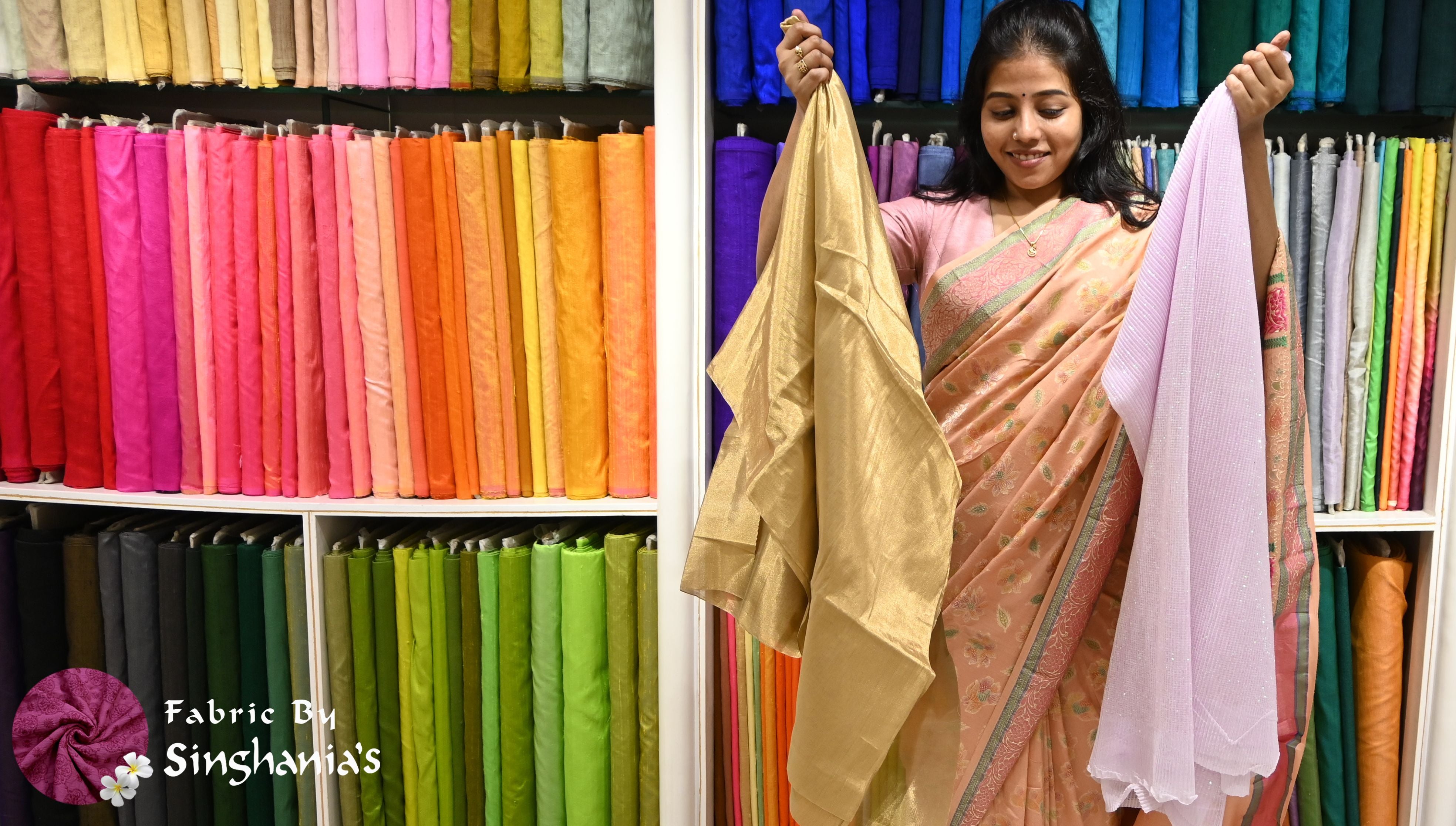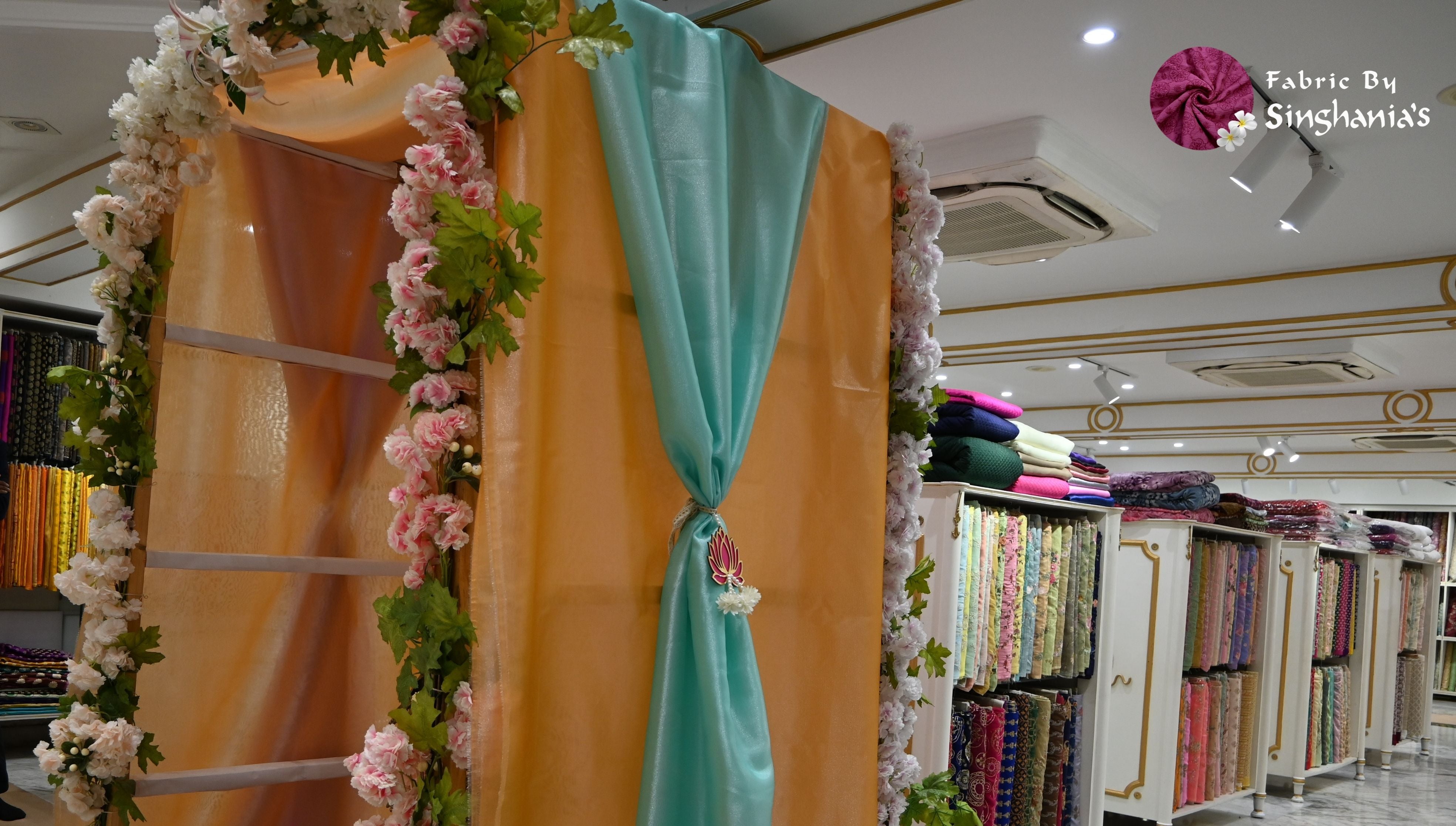Have you ever wondered whether the
Banarasi fabrics that we are purchasing are original? We will help you out with this. In this blog, we will be discussing how we can identify genuine Banarasi fabric.
Banarasi fabric, which originated in India's holy city of Varanasi (formerly known as Banaras), is world-renowned for its exceptional beauty, complex patterns, and rich cultural heritage. It is crucial to understand what makes Banarasi fabric unique. Traditionally made of delicate. Skilled artisans manually weave on pit looms. featuring elaborate designs, which are frequently inspired by Mughal-era motifs. Uses gold or silver threads (Zari) to make complex designs.
The first step in identifying genuine Banarasi fabric is a thorough visual inspection.
Pattern Complexity: Genuine Banarasi fabrics feature detailed patterns that are woven into the fabric itself. Look closely at the design; authentic pieces will have crisp, clear motifs with fine lines and smooth curves. In genuine Banarasi fabric, patterns should flow seamlessly across the entire piece. Imitations may have simpler patterns or designs that appear printed rather than woven.
Zari Work: Examine the gold, silver, or meenakari (enamaled) threads used in the design. In authentic Banarasi fabric, the zari should be evenly woven and integral to the fabric's structure. Real gold or silver zari will have a rich, metallic luster. Authentic zari doesn't tarnish easily and maintains its shine over time. Fake zari may look dull, flake off easily, or have an artificial shine. Fake pieces might have zari that's glued on or appears to sit on top of the fabric rather than being woven into it.

Reverse Side:Turn the fabric over and inspect the reverse side. In genuine Banarasi fabric, you should be able to see the outline of the pattern on the back, though it may not be as distinct as the front. Imitations often have a plain backside or a pattern that doesn't match the front.

The texture of Banarasi fabric can reveal a lot about its authenticity.
a) Weight:
Authentic Banarasi silk has a substantial feel to it. While it's not heavy, it should have a good drape and authentic work on the saree. Imitations might feel too light or flimsy in comparison.
Banarasi fabrics typically use a complex weaving technique called "kadhua." This results in a dense, tight weave with intricate patterns. Use a magnifying glass to look at the fabric structure; you should be able to see individual threads interlacing in a complex pattern.
b) Smoothness:
Run your hand over the fabric. Genuine Banarasi fabric should feel smooth and soft, with no roughness or irregularities. The zari work should be flat against the fabric, not raised or bumpy.
c) Temperature:
Real silk has unique temperature-regulating properties. It should feel cool to the touch initially but warm up quickly with body heat. Synthetic imitations often lack this quality and may feel consistently cool or warm.

c) Transparency:
Hold the fabric up to light. Genuine Banarasi silk should have a slight transparency when held against a bright light. Observe how light interacts with the fabric: Authentic Banarasi silk has a natural shine that changes subtly as the fabric moves.
Price Point
Genuine Banarasi fabrics are complex to produce and use high-quality materials. If a deal seems too good to be true, it probably is. Compare prices across different retailers to get an idea of the typical price range for authentic pieces.
Certifications and Geographical Indication
Banarasi fabrics have been granted Geographical Indication (GI) status. In 2009, after two years of waiting, weaver associations in Uttar Pradesh secured Geographical Indication (GI). Some retailers may provide certificates of authenticity with their products. Look for the "Handloom Mark" issued by the Indian government, which certifies genuine handwoven products.
Edge Verification
Genuine Banarasi fabrics often have a distinct edge with gold or silver zari work. The edge should be even and well-finished, without loose threads or irregularities. Gently separate a few threads at the edge of the fabric. Real silk threads will be long and strong, resisting easy fraying. Synthetic fibers may break easily or fray in a different manner.
Identifying genuine Banarasi fabric requires a combination of knowledge, sensory evaluation, and sometimes scientific testing. By familiarizing yourself with these methods, you'll be better equipped to distinguish authentic pieces from imitations. Remember, each genuine Banarasi fabric is a work of art. While no single method is foolproof, combining multiple techniques will give you the best chance of identifying genuine Banarasi fabric. These tips will help you make an informed decision and appreciate the true beauty of authentic Banarasi fabrics.
Fabric by Singhania’s will always be there, ready to help you select the best Banarasi fabrics for any event. We offer the best Banarasi silk fabrics, which will be worth the investment.
You can buy Banarasi fabric online at Fabrics by Singhania’s. We believe in giving the best and premium quality Banarasi fabrics, which have been spoken about since 1881. These pure Banarasi fabrics are both classic and fascinating.







